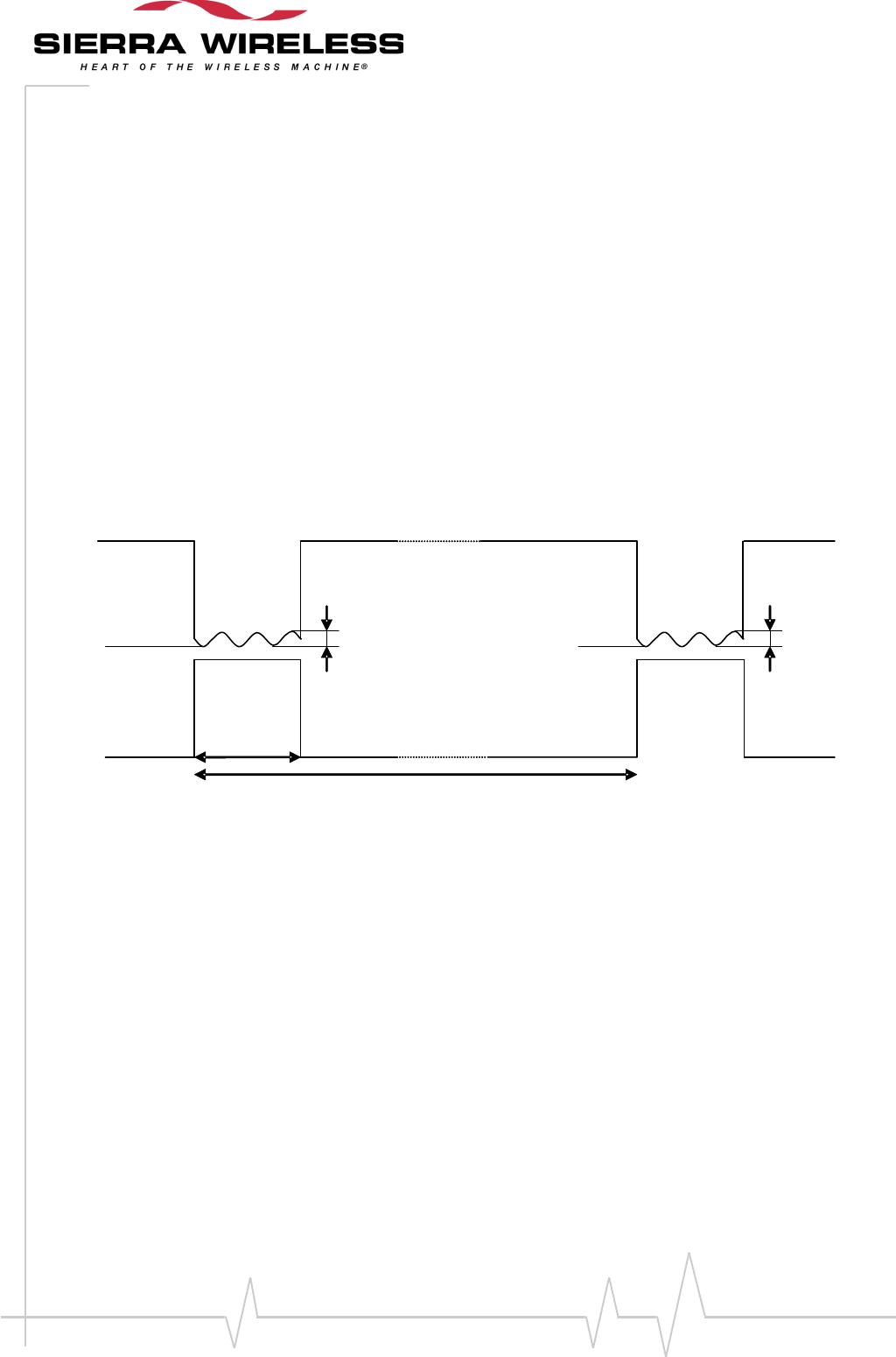
WA_DEV_W218_PTS_002 Rev 005 Page 25 of 109
Product Technical Specification &
Customer Design Guidelines
Power Supply
Power Supply Description
The power supply is one of the key elements in the design of a GSM terminal.
Due to the burst emission in GSM/GPRS, the power supply must be able to deliver high current peaks
in a short time. During the peaks, the ripple (Uripple) on the supply voltage must not exceed a certain
limit (see Table 1 below).
Listed below are the corresponding radio burst rates for the different GPRS classes in communication
mode.
A GSM/GPRS class 2 terminal emits 577µs radio bursts every 4.615ms. (See Figure 2 Power
Supply During Burst Emission below.)
Uripp
VBATT
Uripp
T = 4,615 ms
t = 577 µs
Figure 2. Power Supply During Burst Emission
A GPRS class 10 terminal emits 1154µs radio bursts every 4.615ms.
VBATT provides for the following functions:
Directly supplies the RF components with 3.6V. It is essential to keep a minimum voltage
ripple at this connection in order to avoid any phase error.
The peak current (1.4A peak in GSM /GPRS mode) flows with a ratio of:
1/8 of the time (around 577µs every 4.615ms for GSM /GPRS cl. 2)
and
1/4 of the time (around 1154µs every 4.615ms for GSM /GPRS cl. 10)
with the rising time at around 10µs.
Internally used to provide, via several regulators, the supply required for the baseband
signals.


















